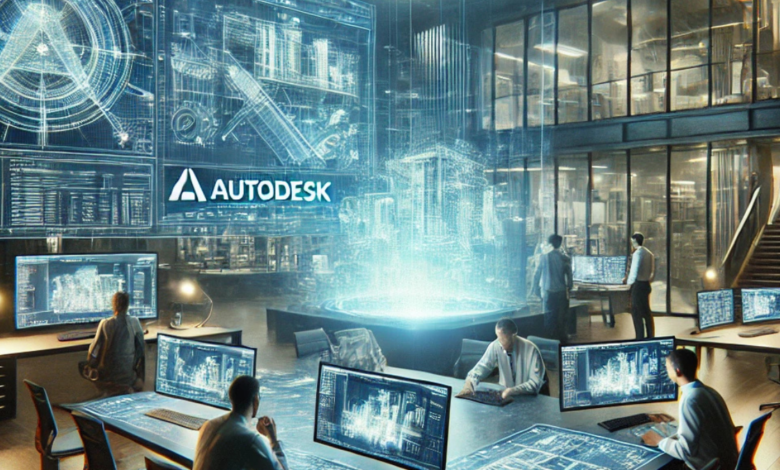Versatility and Impact of Autodesk: Transforming the World of Design and Engineering

Introduction to Autodesk
Autodesk is a name that resonates with professionals and enthusiasts in the fields of design, engineering, and entertainment. This powerhouse of a company has been at the forefront of innovation for decades, empowering industries with state-of-the-art tools and software solutions. Whether you’re an architect drafting the blueprint of a skyscraper, an engineer designing the next big innovation, or a filmmaker creating stunning animations, chances are you’ve relied on Autodesk at some point.
At its core, provides software solutions tailored to specific industry needs. With products like AutoCAD, Revit, and Maya, has become a cornerstone for professionals looking to push the boundaries of creativity and technical precision. However, its impact goes far beyond the tools themselves—it’s about the possibilities these tools unlock.
The Evolution of Autodesk: From Humble Beginnings to Global Leader
journey began in 1982 with the launch of its flagship product, AutoCAD. At a time when computer-aided design (CAD) was in its infancy, AutoCAD revolutionized the industry by bringing digital drafting to personal computers. This was a groundbreaking shift, as it made design more accessible and efficient for professionals across various domains.
As the years progressed, Autodesk didn’t rest on its laurels. Instead, the company diversified its portfolio to include software for 3D modeling, rendering, and even simulation. Its acquisition strategy also played a crucial role in its growth, with notable additions like Revit for building information modeling (BIM) and Maya for 3D animation.
Key Autodesk Products: Empowering Professionals Across Industries
commitment to staying ahead of the curve has been evident in its adoption of cutting-edge technologies. The integration of artificial intelligence, cloud computing, and machine learning into its software suite has further solidified its reputation as a leader in innovation.
1. AutoCAD: The Gold Standard in CAD
AutoCAD remains one of most iconic products. Known for its versatility and precision, AutoCAD is used by architects, engineers, and designers worldwide. The software allows users to create detailed 2D and 3D designs with unparalleled accuracy, making it an indispensable tool in the industry.
One of AutoCAD’s standout features is its customization capability. Users can create custom workflows, automate repetitive tasks, and integrate third-party tools, which enhances productivity. Moreover, its compatibility with other products ensures a seamless workflow across various design stages.
2. Revit: Revolutionizing Building Information Modeling (BIM)
Revit has become synonymous with BIM, offering a comprehensive platform for architects, structural engineers, and MEP professionals. Unlike traditional design software, Revit focuses on creating intelligent models that provide insights throughout a building’s lifecycle.
From conceptual design to construction documentation, Revit ensures all stakeholders are on the same page. Its collaborative features allow teams to work simultaneously on the same project, reducing errors and saving time. Additionally, Revit’s ability to generate energy analysis and simulate real-world performance aligns with the growing demand for sustainable design.
3. Maya and 3ds Max: Redefining Creativity in Entertainment
For those in the entertainment industry, Autodesk’s Maya and 3ds Max are game-changers. These tools are widely used for creating animations, visual effects, and 3D modeling in movies, video games, and TV shows. The intuitive interfaces and robust toolsets enable artists to bring their visions to life with stunning detail.
Maya’s role in blockbuster movies and award-winning animations highlights its capabilities. Whether it’s realistic character modeling or dynamic simulations, Maya is the go-to tool for professionals aiming to captivate audiences.
Autodesk in the Cloud Era: Embracing Connectivity and Collaboration
The advent of cloud technology has reshaped the way professionals work, and has been quick to adapt. With platforms like Construction Cloud and Fusion 360, the company has introduced a new level of connectivity and collaboration.
Autodesk Construction Cloud
This platform is tailored for the construction industry, integrating workflows across all phases of a project. From design to handover, Autodesk Construction Cloud ensures seamless communication between teams, reducing delays and cost overruns. Its analytics capabilities provide actionable insights, empowering decision-makers with data-driven strategies.
Fusion 360: Redefining Product Design
Fusion 360 is a cloud-based tool that merges CAD, CAM, and CAE capabilities into a single platform. It enables product designers and engineers to collaborate in real time, regardless of their physical location. With features like generative design and simulation, Fusion 360 helps professionals create innovative solutions faster than ever before.
Sustainability and Autodesk: Building a Greener Future
Autodesk’s commitment to sustainability goes beyond its software solutions. The company actively promotes green practices through initiatives like the Autodesk Foundation and its partnerships with environmental organizations. By integrating sustainability features into its products, Autodesk empowers users to create designs that minimize environmental impact.
For instance, Revit’s energy analysis tools allow architects to optimize building performance, reducing energy consumption. Similarly, Fusion 360’s generative design feature enables engineers to create lightweight yet robust designs, minimizing material waste.
The Role of Autodesk in Education and Skill Development
Autodesk recognizes the importance of nurturing the next generation of designers and engineers. Through its education programs and certifications, the company provides students and professionals with the skills they need to excel in their careers.
The Autodesk Certification Program is particularly noteworthy, as it validates expertise in using Autodesk software. Whether you’re a student looking to enhance your resume or a professional aiming to stay competitive, these certifications are a valuable asset.
The Future of Autodesk: What Lies Ahead?
As technology continues to evolve, Autodesk is poised to remain a leader in the design and engineering space. The company’s focus on artificial intelligence, machine learning, and augmented reality will open up new possibilities for innovation. Additionally, its commitment to sustainability and inclusivity ensures that it remains relevant in an ever-changing world.
Looking ahead, Autodesk’s vision of “Better Starts Here” reflects its dedication to empowering users to create a better future. Whether it’s through smarter buildings, innovative products, or captivating stories, Autodesk will undoubtedly continue to shape the world as we know it.
Conclusion
Autodesk’s impact on the world of design, engineering, and entertainment cannot be overstated. Its tools have become indispensable for professionals across industries, enabling them to achieve feats that were once unimaginable. As the company continues to innovate and adapt to the needs of its users, one thing is clear: Autodesk is not just a software provider—it’s a catalyst for progress.
Whether you’re a seasoned professional or a student just starting your journey, Autodesk offers the tools, resources, and inspiration you need to succeed. With its rich legacy and forward-thinking approach, Autodesk is shaping a future where creativity knows no bounds.





